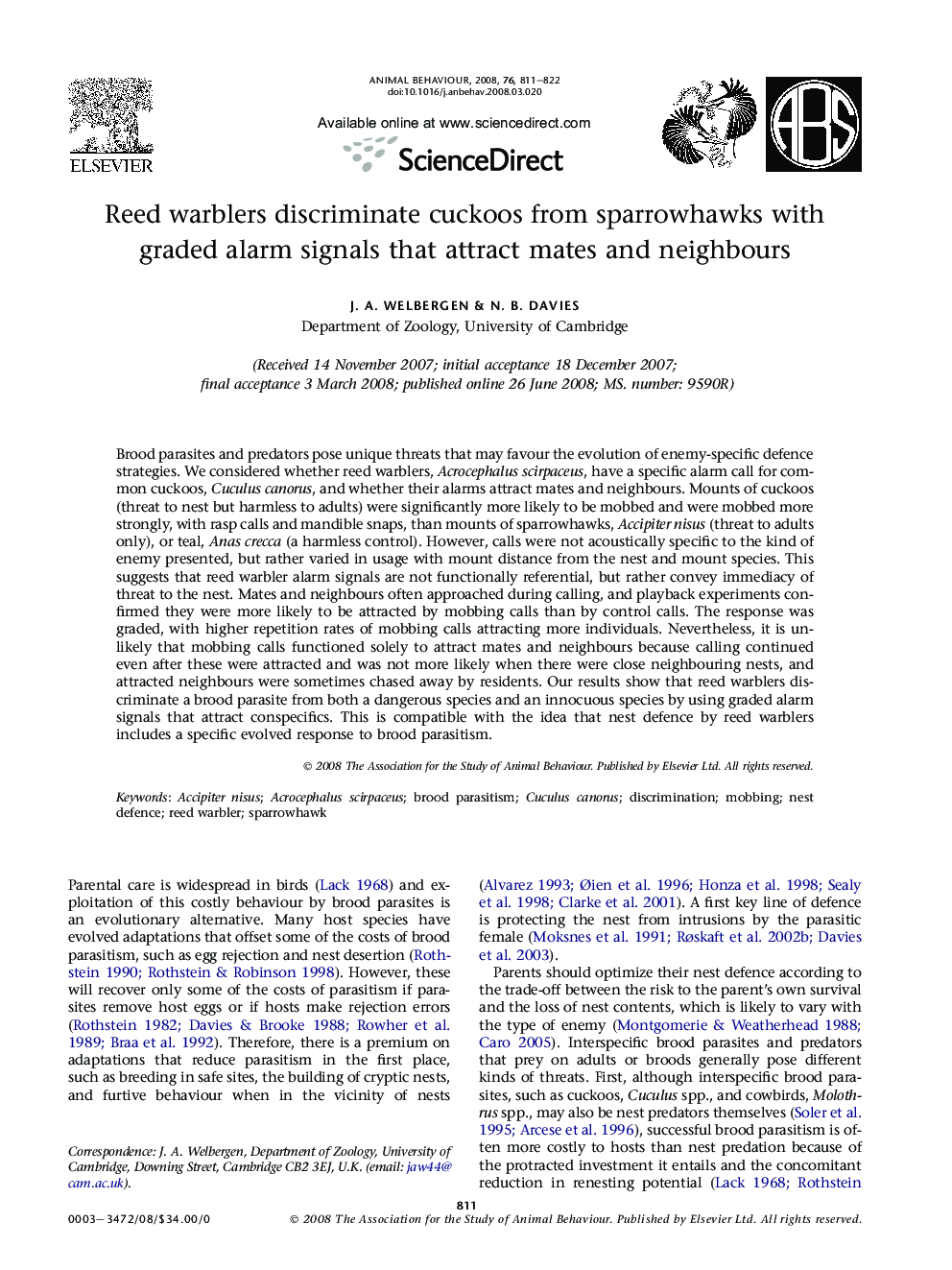| کد مقاله | کد نشریه | سال انتشار | مقاله انگلیسی | نسخه تمام متن |
|---|---|---|---|---|
| 2418826 | 1104358 | 2008 | 12 صفحه PDF | دانلود رایگان |

Brood parasites and predators pose unique threats that may favour the evolution of enemy-specific defence strategies. We considered whether reed warblers, Acrocephalus scirpaceus, have a specific alarm call for common cuckoos, Cuculus canorus, and whether their alarms attract mates and neighbours. Mounts of cuckoos (threat to nest but harmless to adults) were significantly more likely to be mobbed and were mobbed more strongly, with rasp calls and mandible snaps, than mounts of sparrowhawks, Accipiter nisus (threat to adults only), or teal, Anas crecca (a harmless control). However, calls were not acoustically specific to the kind of enemy presented, but rather varied in usage with mount distance from the nest and mount species. This suggests that reed warbler alarm signals are not functionally referential, but rather convey immediacy of threat to the nest. Mates and neighbours often approached during calling, and playback experiments confirmed they were more likely to be attracted by mobbing calls than by control calls. The response was graded, with higher repetition rates of mobbing calls attracting more individuals. Nevertheless, it is unlikely that mobbing calls functioned solely to attract mates and neighbours because calling continued even after these were attracted and was not more likely when there were close neighbouring nests, and attracted neighbours were sometimes chased away by residents. Our results show that reed warblers discriminate a brood parasite from both a dangerous species and an innocuous species by using graded alarm signals that attract conspecifics. This is compatible with the idea that nest defence by reed warblers includes a specific evolved response to brood parasitism.
Journal: Animal Behaviour - Volume 76, Issue 3, September 2008, Pages 811–822